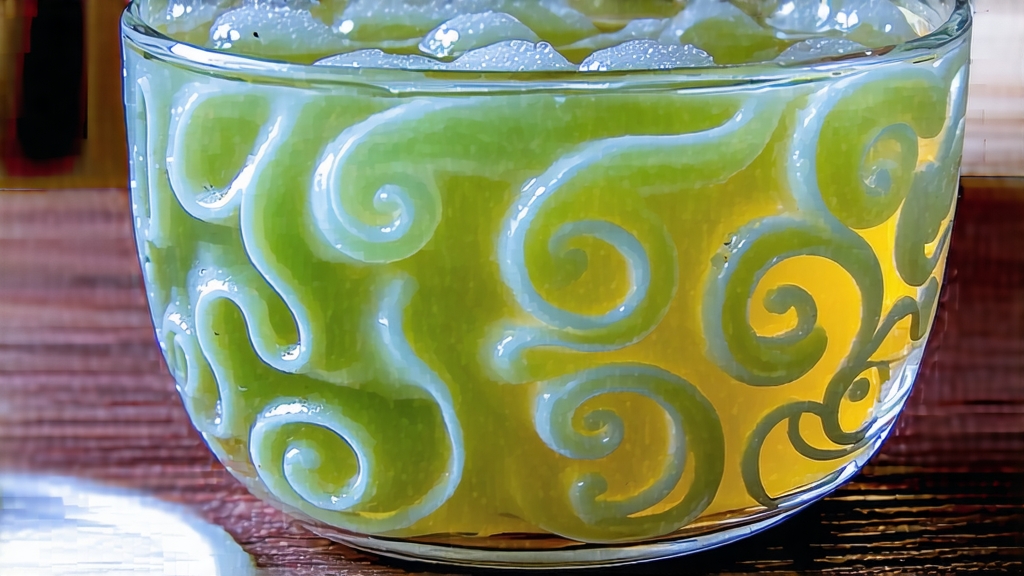
Biluochun, whose name translates literally to “Green Snail Spring,” is one of China’s ten most celebrated teas, yet among Western connoisseurs it remains an undiscovered miniature masterpiece. Grown in the lake-cradled microclimate of Dongting Mountain near Suzhou, Jiangsu Province, this tea is prized for its tiny spiral-shaped leaves, downy silver tips, and a fragrance so delicate that locals claim the aroma is best appreciated before the water even touches the leaf.
Historical records first mention Biluochun during the late Ming dynasty, around the seventeenth century, when it was known by the humbler name “Xia Sha Ren Xiang”—literally “Scary Fragrance”—because its perfume was so arresting that tea pickers feared they had stumbled upon some intoxicating flower. Legend credits a Qing-era emperor, Kangxi, with rechristening the tea during his southern inspection tour; impressed by the leaf’s jade spirals and the brew’s early-spring vitality, he penned the elegant title “Bi Luo Chun,” combining the tea’s color, shell-like curl, and seasonal character.
Unlike many Chinese teas that encompass several regional substyles, Biluochun is geographically monogamous: authentic leaf must originate within the East and West Dongting peaks of Taihu Lake. Here, tea gardens are interplanted with fruit trees—peach, plum, apricot, and loquat—whose blossoms deposit a faint nectar on the young tea buds, amplifying the tea’s natural floral sweetness. The lake’s morning mist moderates sunlight, slowing photosynthesis and encouraging amino acids, especially L-theanine, to accumulate, yielding the tea’s hallmark umami silkiness.
The cultivar itself is a small-leaf Camellia sinensis var. sinensis clone locally called “Xiao Ye Cha.” Its diminutive size allows the farmer to pick only the most compact bud-and-immediate-leal set, an unopened duo Chinese graders term “one flag, one shoot.” Standard pluck occurs during a three-week window straddling Qingming Festival; any later and the serrated leaf edge expands, making the tight spiral impossible to roll.
Crafting Biluochun is a half-day ballet of heat, hand, and timing. Withering is skipped entirely; instead, the freshly plucked flushes are immediately “sha qing” or kill-green in a shallow, 160 °C wok. The tea master tosses 250 g of leaf at a time, using a rhythmic pressing motion that both dehydrates and sets the emerald hue. Within four minutes the leaf moisture drops from 75 % to 58 %, at which point the temperature is lowered to 80 °C and the true shaping begins. Using three basic hand techniques—“tuan” (gathering), “cu” (rubbing), and “mo” (polishing)—the master coaxes each bud into a tight spiral against the wok’s curved wall. The motion resembles kneading dumpling dough yet demands feather pressure; too heavy and the trichomes fall off, stripping the tea of its silvery down and aroma. After twenty minutes the leaf is fired again at 60 °C for ten minutes, rested for thirty, then given a final low-temperature bake at 50 °C to lock in fragrance. When finished, one kilogram of finished tea contains roughly sixty thousand hand-rolled spirals.
Brewing Biluochun is an exercise in restraint. Choose a tall, clear glass or a 150 ml gaiwan; the transparency allows you to watch the tiny coils unfurl like miniature fern fronds. Water should be 75–80 °C—cooler than most green teas—because the leaf is exceptionally thin and scalds easily. A common Suzhou method is the “three-stage infusion”: first, fill the vessel one-third full, gently drop 3 g of tea onto the surface, and wait for the strands to sink; then add water to two-thirds, inhaling the rising vapor; finally top up after thirty seconds and sip. The liquor should be the color of liquid jade, bright enough to read newsprint through.
Flavor unfolds in three acts. The front palate registers a snow-pea sweetness, followed by a mid-palate creaminess reminiscent of blanched asparagus with a hint of loquat. The finish is clean, almost mineral, echoing the granite soils of Dongting. Astringency is present but polite, arriving as a gentle tightening at the sides of the tongue rather than a harsh bite. The hallmark of top-grade Biluochun is its lingering “hui gan